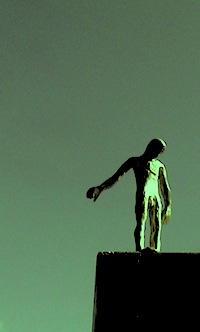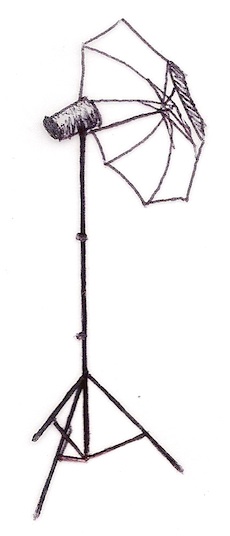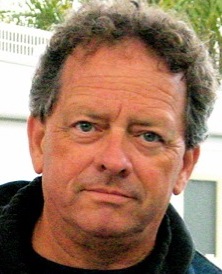
Taking the Leap - Fear
Most of the things I worry about never happen anyway.
—Tom Petty
It might just be that there's only one real impediment to taking the leap—fear.
Fear is a very interesting phenomenon. It served a good and necessary function in the wilderness environment of our ancient ancestors. But as a general rule, modern artists rarely encounter the sort of life threats that fear mobilizes us to meet.
When was the last time you met a bear face to face in the woods? We're nonetheless hardwired for fear, and in the absence of actual threats in our face, we extrapolate threats out of thin air. We call this kind of fear worry. And the unique characteristic of worry is that it's always about something that hasn't happened. In fact, it's usually about something we can't even really predict. And almost always, actual outcomes are different from the worries we attached to them in advance.
If you have ever encountered that bear in the woods, or a rattlesnake in the middle of your hiking trail, you know that actual fear is not like worry at all.
It has a clear focus in the immediate present. And real fear takes measures in the moment to address the threat.
 It takes action. It resolves the situation and then goes away. And it feels entirely different from worry. Fear never has time to worry. It's all focus, and all business. I know this because I actually encountered this 40 inch rattlesnake (left) in tall grass one day at close range. My focus and attention to detail were on high alert in that moment, and there was nothing of the ego calamity that is worry. Rather, it was one of the most alive and powerful experiences of my life. I even had the presence of mind to drive a stake in the ground in front of him to keep him preoccupied while I went to get my camera! Now you might say that I was brave, or stupid, or lucky, but really, I was just hyperfocused in the moment. This is the nature of real fear.
It takes action. It resolves the situation and then goes away. And it feels entirely different from worry. Fear never has time to worry. It's all focus, and all business. I know this because I actually encountered this 40 inch rattlesnake (left) in tall grass one day at close range. My focus and attention to detail were on high alert in that moment, and there was nothing of the ego calamity that is worry. Rather, it was one of the most alive and powerful experiences of my life. I even had the presence of mind to drive a stake in the ground in front of him to keep him preoccupied while I went to get my camera! Now you might say that I was brave, or stupid, or lucky, but really, I was just hyperfocused in the moment. This is the nature of real fear.
On the other hand, worry is the effort to reduce the future to a crisis that we can manage in advance. Because worry is future fantasy, it can't be resolved in the moment the way real fear is. It stews and simmers and evolves without resolution. And it just doesn't work.
So how does this relate to art? How does it relate to taking the leap? As we ask these questions, some partial answers come quickly. What if I can't make a living at my art? What if no one likes it? What if I can't get anyone to show it? At one level, these are real questions, and real concerns. You have no guarantees. All you have is you and your vision and your practice. You don't have the future. You don't have the answers. But that's exactly the point. These are worry questions. They're about a future that you can't know right now. All you can know about them is that if you do not take the leap, those questions will never be answerable.
Here's a little trick to play on your worry engine when it gets in high gear. Ask yourself, "In this moment, how am I doing?" Check your breath. Are you breathing. Check your belly. Are you hungry? Is your chair comfortable? What's happening around you? No, no! Don't tell me nothing's happening. Is the hum of a fan droning in the background? Is there a beam of light streaming across the room? is there a little brown bird with stripes on its wings and tail outside your window? Check in with yourself and see what's actually going on right now—in detail. Take a moment with this, and get a full picture of this present moment. Go ahead, we'll wait for you right here.
Is it a surprise to you that the worry engine cannot operate in this conscious moment? Now that you are here, rather than off in that horrible fantasy future where worry lives, what do you want?
Being Seen—Photographing Your Work
Writing this article, I googled "photographing artwork" and got a quarter of a million hits. At first I thought to myself, "Why write this article? The information is all out there at the ready. People can just look it up." But then I thought again.

I was recently part of a committee that put on a California state-wide sculpture show. The first comment we got back from the juror after the submission photographs were all handed over to him was that many of the images were quite poor. The show went well and had a high caliber of artwork, but the photography was a problem and ultimately affected what work made it into the show.
The reality is that the existence of countless good websites about how to photograph art did not stop a hundred or so of our 153 entrants from sending in poor quality images of their work. It seems intuitive that a piece of art cannot look better to a juror, gallery owner, or consultant than the photographs that you submit to them.

It doesn't help matters that many artists are not photographers, and have very tight budgets for such things. Unless your art is photography, or you have a serious hobby as a photographer, it's worthwhile to try to find a way to get your work photographed professionally. Pay for it, barter art for it, impose on your professional photographer cousin, but do not send badly lit, poorly composed photographs of art set against a distracting background or a wrinkled bedsheet and expect positive results. Your photography represents your work. It says something very important about you. Pay careful attention to that message and be brutal with yourself about the importance of it.
This is not to say that you cannot photograph your own work. Taking your own pictures saves money. There are many decent pocket digital cameras out there these days and you probably already have one that can get good results. But if you do go this route, spend some effort to learn and apply the techniques of artificial studio lighting. Three basic lights will do. Learn how to use natural lighting. Put serious effort into controling the backdrop for your work. Pay attention to composition, exposure, and color—and by all means, focus your camera! I feel like I'm brow beating you with the obvious here, but poorly done photography is epidemic in the art world today. Hopefully, you are the exception, or will be now anyway.
| 

 It takes action. It resolves the situation and then goes away. And it feels entirely different from worry. Fear never has time to worry. It's all focus, and all business. I know this because I actually encountered this 40 inch rattlesnake (left) in tall grass one day at close range. My focus and attention to detail were on high alert in that moment, and there was nothing of the ego calamity that is worry. Rather, it was one of the most alive and powerful experiences of my life. I even had the presence of mind to drive a stake in the ground in front of him to keep him preoccupied while I went to get my camera! Now you might say that I was brave, or stupid, or lucky, but really, I was just hyperfocused in the moment. This is the nature of real fear.
It takes action. It resolves the situation and then goes away. And it feels entirely different from worry. Fear never has time to worry. It's all focus, and all business. I know this because I actually encountered this 40 inch rattlesnake (left) in tall grass one day at close range. My focus and attention to detail were on high alert in that moment, and there was nothing of the ego calamity that is worry. Rather, it was one of the most alive and powerful experiences of my life. I even had the presence of mind to drive a stake in the ground in front of him to keep him preoccupied while I went to get my camera! Now you might say that I was brave, or stupid, or lucky, but really, I was just hyperfocused in the moment. This is the nature of real fear.



